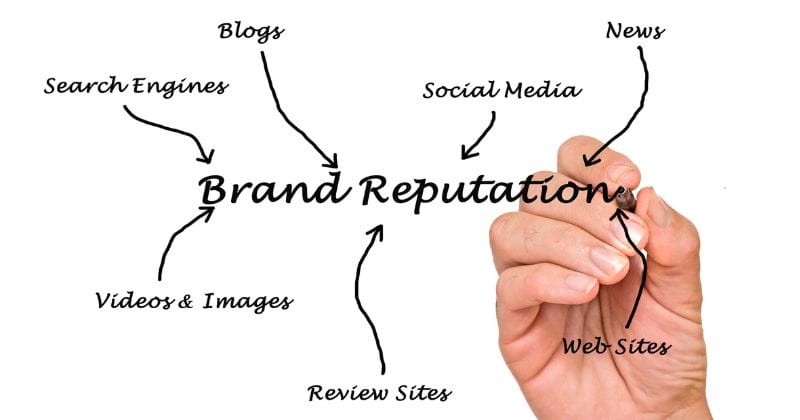Improving your blog’s writing style is essential. Many bloggers aim to engage their audience better and improve SEO simultaneously.
Crafting content that connects and performs well on search engines is a key challenge. The style of your blog plays a significant role in both reader engagement and online visibility.
Focus on developing a writing style that’s genuine and optimized for search engines. Integrating keywords smoothly will satisfy both your audience and search algorithms.
Drawing on experience from effective blog initiatives, I’ve observed how an appropriate writing style significantly enhances content. This method has been effective in drawing and keeping readers and boosting search rankings.
Understanding Style

Importance
A well-crafted blog writing style is key for enhancing reader engagement. It significantly impacts how readers interact with the content, influencing their decision to stay on a page.
Maintaining a consistent and appealing writing style can strengthen brand credibility as it reflects professionalism and expertise.
Incorporating key elements such as an engaging tone, clear structure, and appropriate language choices is essential for creating compelling blogs. Visuals and multimedia elements enhance the overall reading experience, providing additional context or explanations where needed.
Key Elements
- Consistent Tone: Essential for creating a unified reading experience.
- Logical Structure: Guides the reader smoothly through the content.
- Language Choices: Must resonate with the target audience.
- Visuals: Images, infographics, and videos make information more digestible.
Including call-to-action statements prompts readers to engage further with the content or take desired actions like subscribing or sharing posts on social media platforms.
Style Guide
Components
- Headlines: Capture attention at first glance.
- Introductions: Set the tone for the content.
- Body: Provides in-depth information with facts or examples.
- Conclusions: Summarize key points discussed.
Utilizing subheadings within body sections organizes information systematically, while bullet points highlight important details efficiently. Effective call-to-action statements encourage reader interaction.
Designing Guide
- White Space: Enhances readability by preventing visual clutter.
- Font Styles: Ensure legibility across devices.
- Color Schemes: Add visual appeal without distracting.
- Layouts: Optimize navigation and adapt well across various screen sizes.
A careful selection of font styles and complementary color schemes adds visual appeal while designing user-friendly layouts, which involves optimizing navigation menus and incorporating responsive design features.
Developing Techniques
Readability Tips
Improving readability is crucial for engaging readers. Keep sentences and paragraphs short to maintain interest. Transition words help in creating a smooth flow within the content. Active voice enhances clarity and makes the text more engaging.
Using headings and subheadings aids in organizing the content effectively. They provide structure, guiding readers through different sections seamlessly.
Paragraph Structure
Topic sentences play a vital role in setting the tone for each paragraph. They introduce the main idea, guiding readers on what to expect next. Coherence and unity within paragraphs ensure that ideas flow logically from one to another.
Varying sentence length adds rhythm to your writing, capturing readers’ attention by breaking monotony. It helps maintain engagement throughout the piece.
Conversational Posts
Engaging Tone
Establishing a conversational tone creates a connection with readers, making them feel like they are part of a dialogue rather than just reading text. Injecting personality and humor into your writing adds flair and keeps readers entertained.
Adapting the tone based on the target audience is essential; it ensures your content resonates with them effectively. Tailoring your tone according to different types of content helps convey messages appropriately.
Short Paragraphs
Advocating for concise paragraphs is key to maintaining reader interest and comprehension levels. Short paragraphs create visual appeal, making it easier for readers to digest information quickly without feeling overwhelmed by long blocks of text.
Using short paragraphs strategically can significantly impact emphasizing key points or building suspense in storytelling pieces. Breaking down complex ideas into smaller chunks enhances understanding and retention among readers.
Unique Style Creation

Personalized Style
Develop a unique voice to engage readers authentically and foster a strong connection with them. Incorporate personal anecdotes to add depth and relatability to your content. Balancing personal flair with professional standards ensures credibility.
Brand Alignment
Reflecting Values
Aligning your writing style with core values reinforces your brand identity and fosters trust among your audience. Infuse ethical principles seamlessly into blog content for an authentic representation of beliefs. Brands like Patagonia exemplify this by integrating sustainability values into their writing.
Consistency
Maintaining a consistent writing style across blog posts establishes a recognizable brand image, enhancing brand recall among readers. Consistency in tone, language, and messaging is key to building credibility and loyalty with the audience.
Tone and Engagement
Choosing Tone
When crafting blog content, selecting the appropriate tone is crucial. The tone sets the mood for your piece and determines how readers perceive your message. Consider your audience demographics and preferences.
Aim for a tone that resonates with your target audience to establish a strong connection. Ensure consistency throughout the article, whether formal, informal, friendly, or professional.
Different Tones
Experimenting with different tones can help you determine what works best for engaging your readers. Try incorporating humor in some posts to lighten the mood and connect on a more personal level.
On the other hand, adopting a serious tone can be effective when discussing complex topics or sharing important information. Varying tones keep your content fresh and appeal to a wider range of readers.
Impactful Content
Creating impactful content involves striking a balance between informative material and engaging storytelling. Blending facts with anecdotes or real-life examples can capture readers’ attention while delivering valuable insights.
Utilize descriptive language to paint vivid images in readers’ minds and evoke emotions that resonate with them. This approach helps create memorable content that leaves a lasting impression on your audience.
Authentic Connection
Building an authentic connection with your audience is essential for fostering trust and loyalty. Share personal experiences or behind-the-scenes glimpses to show the human side of your brand. This transparency helps establish a genuine bond with readers, leading to increased engagement and loyalty over time.
Crafting relatable content that addresses common challenges or experiences can further strengthen this connection. So, by acknowledging their struggles and offering solutions or support, you demonstrate empathy and understanding towards your audience’s needs.
Writing Styles Exploration

Narrative Writing
Narrative writing involves telling stories or recounting events in a captivating and engaging way. It focuses on descriptive details to draw readers into the narrative. By creating vivid imagery, writers can immerse readers in the story.
Investigative Techniques
When employing investigative techniques, writers delve deep into a subject to uncover hidden truths or provide unique perspectives. They use research skills and critical thinking to present factual information backed by evidence. This style aims to inform and educate readers through thorough analysis.
Persuasive Arguments
In persuasive writing, authors aim to sway the audience’s opinion or encourage specific actions through compelling arguments. By utilizing logical reasoning and emotional appeals, writers can effectively convey their viewpoints. Crafting convincing arguments requires a blend of solid evidence and engaging rhetoric.
Rebuttal Style
The rebuttal style involves addressing opposing viewpoints or criticisms with well-structured counterarguments. Writers must anticipate potential objections and offer logical responses to strengthen their position.
This approach showcases the writer’s ability to engage in constructive dialogue while defending their stance.
Open Letter Format
Writing in an open letter format allows authors to address a specific individual, group, or organization directly. This style fosters a sense of personal connection with the audience while conveying important messages openly.
This format allows writers to express opinions, share concerns, or advocate for change effectively.
Enhancing with Visuals

Pictorial Style
Images play a crucial role in enhancing the overall appeal of a blog post. They break up long chunks of text, making it easier for readers to digest information. Incorporating relevant images can significantly improve the visual experience for your audience.
Utilizing infographics is an effective way to present complex data or statistics in a visually appealing manner. Infographics combine text and visuals to convey information concisely and engagingly. Readers are more likely to retain information presented in this format.
Screenshots or screencasts can provide step-by-step guidance on performing certain tasks or using specific tools. These visuals serve as valuable references for readers seeking practical instructions.
Effective Use
When selecting images for your blog posts, ensure they are high-quality and relevant to the content. Low-resolution or irrelevant images can detract from the overall reading experience. Opt for images that complement your writing and add value to the discussed topic.
Another effective visual element is embedding videos within your blog posts. Videos can offer a dynamic way to engage with your audience, providing them with additional insights or demonstrations related to the content. Including video content can increase dwell time on your website.
Moreover, incorporating custom graphics or illustrations can help establish a unique brand identity for your blog. Custom visuals make your content stand out and create a memorable impression on readers.
Structuring Content

Blog Post Structures
Blog post structures play an important role in capturing readers’ attention and conveying information effectively. A clear introduction sets the tone for the post, engaging readers from the start. Following this, a well-organized body with subheadings helps break down complex information into digestible chunks.
Incorporating relevant examples and case studies can provide real-world context to the content. Concluding with a strong call-to-action encourages reader engagement and interaction, increasing the post’s effectiveness.
Listicles Crafting
Crafting listicles involves structuring content in a concise and organized manner. Utilizing bullet points or numbered lists can help present information clearly and enhance readability. Moreover, including engaging titles for each point captures readers’ interest and keeps them invested in the content.
Creating a balance between informative content and visual appeal is key to crafting compelling listicles that resonate with audiences. Incorporating eye-catching visuals, such as images or infographics, can further enhance the overall presentation of the listicle.
Instructional Style
An instructional writing style aims to guide readers through processes or tasks clearly and concisely. Using step-by-step guidance, writers can break down complex procedures into manageable steps for easy understanding. This approach ensures that readers can follow along seamlessly without confusion.
Incorporating relevant examples or scenarios within instructional content provides practical insights for readers to apply concepts effectively. By offering actionable tips and highlighting potential pitfalls, writers empower readers to navigate tasks successfully.
Step-by-Step Guidance
- Begin by outlining the objective of the task.
- Break down each step into clear and concise instructions.
- Use bullet points or numbered lists for easy comprehension.
- Include visuals like screenshots or diagrams to aid understanding.
- Conclude with a summary or key takeaways for reinforcement.
Roundup Approach
When adopting a roundup approach in blog writing, gather diverse perspectives on a specific topic from various sources. Curate insights from experts or influencers to offer valuable opinions on trends or industry developments.
Learning from Others

Analyzing Examples
Studying successful blog posts by renowned writers can offer valuable insights into effective writing techniques. Aspiring bloggers can enhance their skills by examining their use of engaging headline strategies, content structure, and tone.
Analyzing how popular blogs incorporate multimedia elements like images or videos to complement text can inspire the creation of visually appealing content. Observing how these blogs interact with their audience through comments and social media engagement can also inform budding writers about fostering reader interaction.
Enhancing Skills
To improve at writing blogs, new writers should create a unique voice that connects with their readers. This means making interesting beginnings and keeping the same tone throughout the post.
Experimenting with different writing styles, such as informative, conversational, or persuasive tones, can help bloggers discover their strengths and preferences. Incorporating storytelling techniques to make complex topics more relatable and engaging is another skill bloggers can use to captivate readers.
Learning Blogs
Exploring a diverse range of blogs across various niches exposes writers to different styles, formats, and topics. This exposure broadens knowledge and sparks creativity by presenting fresh perspectives and innovative approaches to content creation.
By following industry-specific blogs related to their niche, writers stay updated on current trends, news, and best practices. This continuous learning process enables bloggers to produce relevant, timely content that resonates with their target audience.
Interview Techniques
Learning how to conduct insightful interviews for blog posts involves preparation, active listening skills, and asking thought-provoking questions. Researching the interviewee beforehand helps craft relevant queries that delve deep into the subject matter while maintaining a conversational flow.
Utilizing open-ended questions allows interviewees to share detailed insights and personal anecdotes that add depth and authenticity to blog posts. Developing rapport with interviewees fosters trust and encourages candid responses, resulting in compelling content that captivates readers’ attention.
Final Thoughts
Enhancing your blog writing style is crucial for audience connection and SEO improvement. We’ve discussed methods for creating engaging and optimized content for search engines, highlighting the significance of being genuine and aligning with your audience. This technique attracts readers and increases your blog’s search visibility.
I encourage you to share your blog writing experiences or advice with us. Let’s build our blogging capabilities by exchanging knowledge.
Look forward to future posts offering deeper insights into refining your blog writing style and techniques for maintaining compelling content. Every tip contributes to your blogging progress, supporting your development in this field.
FAQs
What is a blog style of writing?
A blog style of writing is informal and conversational. Paragraphs can be short, even down to a single word or sentence. It emphasizes readability and accessibility, with sentences designed to convey a single, clear idea for easy understanding.
What are the 3 blogging styles?
The three primary blogging styles are 1. Brand blogging, focusing on a specific brand’s products or services, 2. Link blogging, which aggregates links to other relevant content, and 3. Video blogging, leveraging video content as a powerful marketing tool.
What is the format of writing a blog?
The format of writing a blog involves using bolding for emphasis, italicizing titles and names, employing header tags for organization, and incorporating block quotes for support. This structure is designed to enhance reader engagement and clarity.
What are the writing techniques for blogging?
Effective blogging techniques include understanding the post type, adhering to grammatical standards, outlining before writing, conducting research, optimizing for digital reading, incorporating personal voice, reading drafts aloud, and getting editorial feedback.



